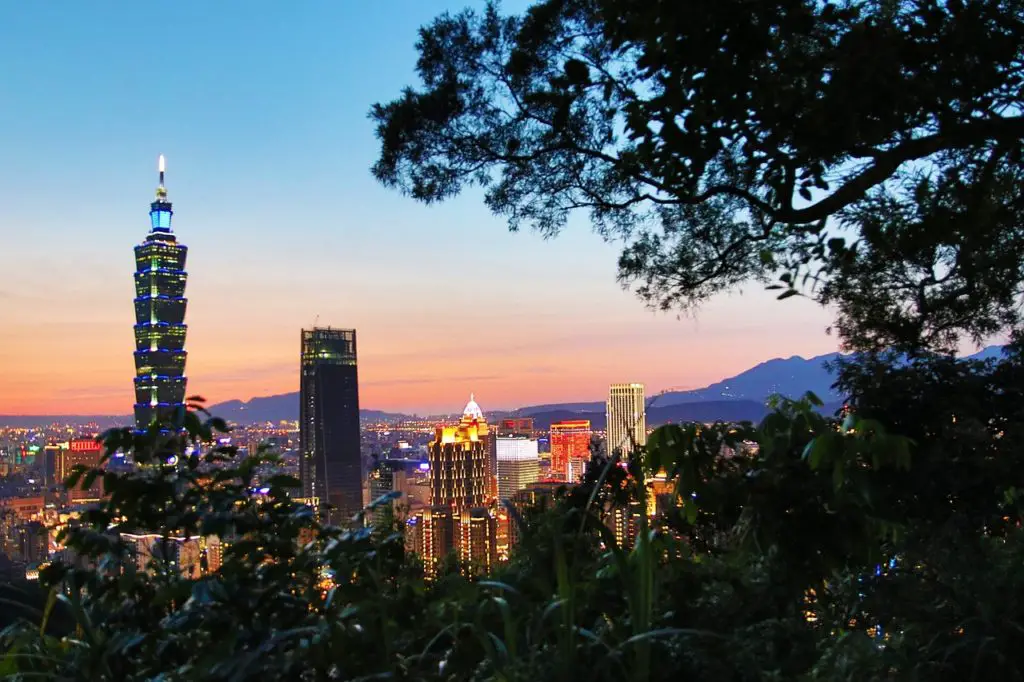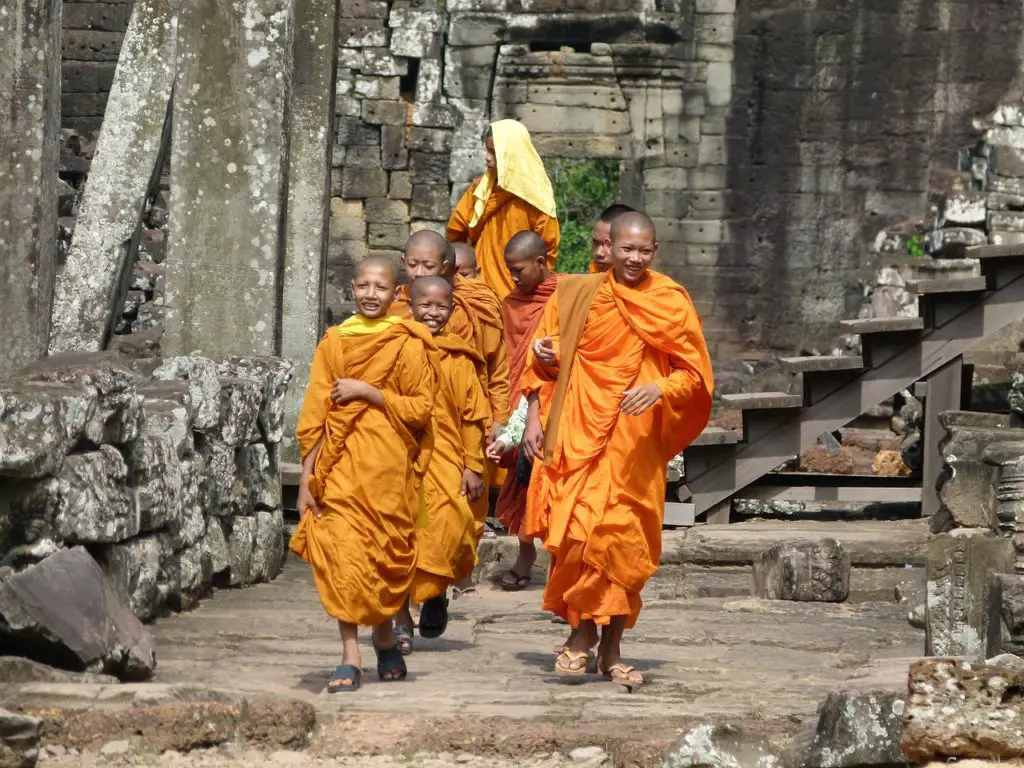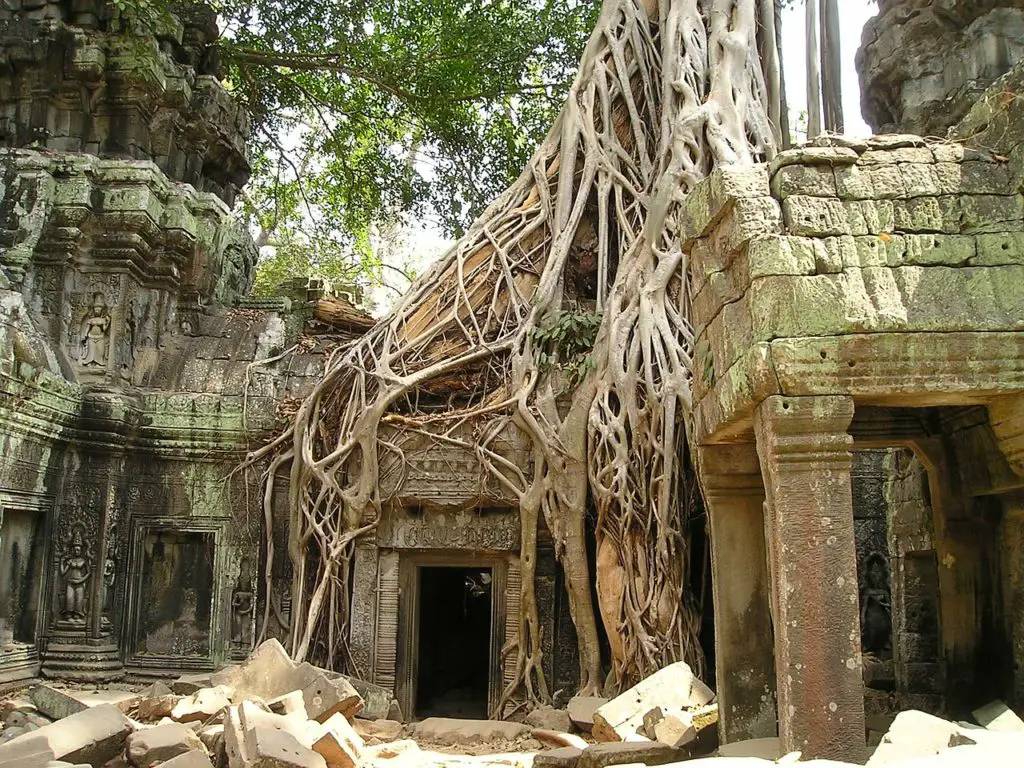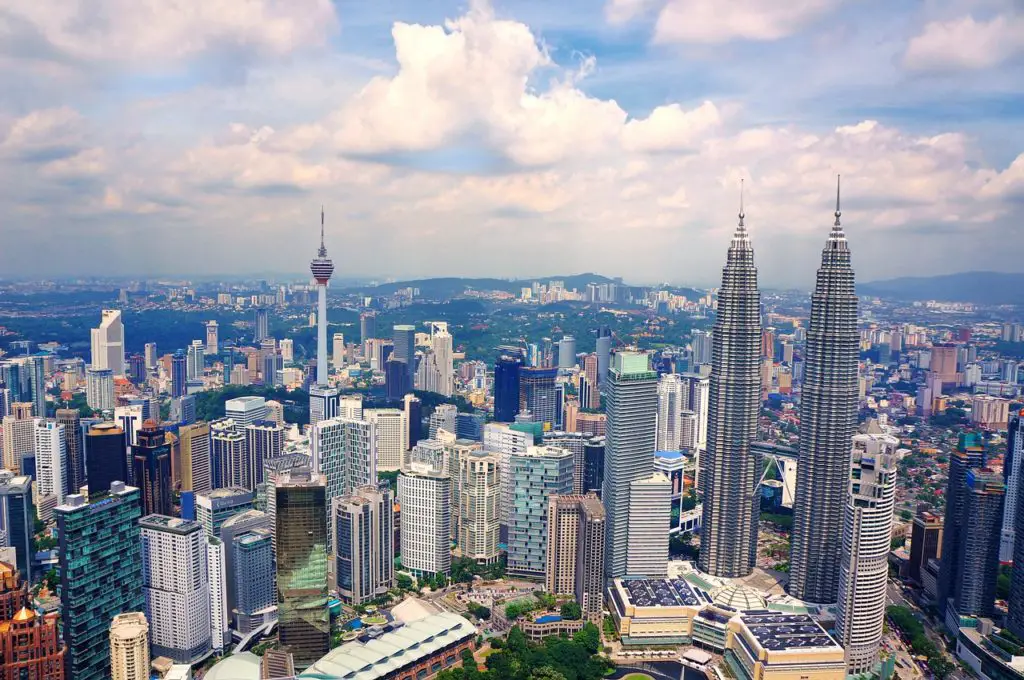Taipei 101, the Chiang Kai-shek Memorial Hall, and the Lungshan Temple are some of the landmarks found in this city. In our guide on what to do in Taipei for 3 days, we walk through modern, historical, and religious must-visits in the city.
Taipei sits on the Taipei Basin which is an ancient lakebed and borders the port city of Keelung on its southwest. The earliest settlements in Taipei were the Ketagalan tribes who inhibited the city before the 18th century.
Taipei is at the center of Taiwan’s business, economical, financial, and technology hub and is now a global city for technology and electronics, brought about by the Taiwan Miracle.
Our highlights on what to do in Taipei for 3 days are:
- Taipei 101
- National Palace Museum
- Chiang Kai-shek Memorial Hall
- Bangka Lungshan Temple
- Dalangdon Baoan Temple
You have landed on the right page if you are looking for answers to the following questions:
- Where is Taipei?
- How can I spend 3 days in Taipei?
- Is Taipei expensive?
- Is Taipei English friendly?
- Is Taipei worth visiting?
Let’s dive right in!
Disclaimer: Some of the links here are my affiliate links and I may earn if you click on them, AT NO EXTRA COST to you. Please read my Disclaimer Policy for more information. Hope you find the information here useful! Thank you!
Where is Taipei?
Taipei is located within the Taipei Basin and has the Xindian River to its south and the Tamsui River to its west. The earliest known settlements were the Ketagalan Plains aborigines who were in Taiwan before the 18th century.
The mass migration of Han Chinese from Fujian Province began arriving at the Taipei Basin in 1709, and by the late 19th century, Tamsui Port was already gaining importance due to booming overseas trade.
Taipei is Taiwan’s business, financial, and technological hub with Taipei’s main development areas being in information and communications technology, general merchandising, and financial services.
Tourism is an important economic driver for Taiwan. With museums, Taipei 101, performing arts, shopping and recreation, temples, and festivals, Taipei is open all year round.
When is the best time to visit Taipei?
Taiwan has a subtropical climate with long, hot, and humid summers. This is followed by occasional rain and typhoons. Winters are short, warm, and foggy due to the northeasterly winds from Siberian High.
The spring months are from March to May and are one of the best times to visit and to discover Taipei’s natural and cultural heritage. You can expect temperatures and rainy days to rise steadily.
You can catch the end of the cherry blossoms in March and visit the botanical parks and gardens during these spring months.
Summer begins from June to August and is the peak tourist season as the summer school breaks begin in early July. Be prepared for monsoons and always pack rain ponchos if you are visiting during these months.
Another best time to visit Taipei is during the fall months of September till November when the tree leaves begin to change color. The best place to capture this beautiful display is Taroko Gorge. The Mid Autumn Moon Festival also happens during these months.
Winter begins from December till February brings fog, cloudy skies, and cool temperatures. As tourist numbers are low, this is another best time to visit Taipei’s top landmarks, minus the crowds.
Make a trip to Beitou Hot Springs or simply admire the cherry blossoms as they bloom in January and February.
How do you get around in Taipei?
Some of the frequent ways to get around in Taipei include the Taipei Metro, bus, taxi, and bikes.
Taipei Metro
The easiest and most convenient way to get around is using the Taipei Metro. There are six lines which are the Wenhu Line (Brown), Tamsui-Xinyi Line (Red), Songshan-Xindian Line (Green), Zhonghe-Xinlu Line (Orange), the Bannan Line (Blue), and the Circular Line (Yellow).
The Taipei Metro is ranked one of the best and is known as the cleanest, most reliable, and most efficient subways in the world. The price for a single journey ticket costs between NT$20 ($0.80) to NT$65 ($3) per person.
Bus
The public buses in Taipei are operated by the Taipei Joint Bus System. The buses are air-conditioned, clean, and efficient. The bus stops have electronic signs that show when the next bus is arriving.
The fares are based on sections, which impact how much and how often you pay. For example, one section costs NT$15 ($0.50) while two sections cost NT$30 ($1) and three sections may cost you NT$45 ($1.70) per person.
Taxi
Most taxi drivers do not know English, so if you are going to hail a yellow cab, make sure you have your destination written in Chinese characters. Most importantly, ensure the driver turns on the meter.
The taxi rate starts at NT$70 ($2.52) for the first 0.77 miles and is NT$5 ($0.18) for each additional 0.12 miles. There is a surcharge of NT$20 ($0.80) for rides after 11 pm.
You can also opt for Uber, Lyft, and Line Taxi which is a taxi-hailing service that is reliable, safe, and supports a variety of payment methods.
Bike
Another popular method to get around Taipei is by using YouBike which encourages citizens to use a bicycle as a means of short-distance transportation. These bikes complement the Taipei MRT system.
For non-members, you would have to pay via credit card at the kiosk while members can pay using EasyCard. The rates are NT$10 ($0.36) for 30 minutes within the first 4 hours, NT$20 ($0.80) for 30 minutes between 4 to 8 hours, and NT$40 ($1.45) for 30 minutes exceeding 8 hours.
EasyCard Taipei
EasyCard is a cashless card that integrates ticket payment across multiple platforms. The card can be used to pay fares on Taipei Metro, public buses, parking, and at selected retailers.
The adult standard card fare costs NT$100 ($3.60) and can be purchased at all 7-Eleven, Family Mart, OK Mart, and Simple Mart stores throughout Taiwan.
How can I spend 3 days in Taipei?
To fully explore and immerse yourself in Taipei’s cultural, historical, and many shopping districts, you would need more than 3 days. However, 3 days in Taipei is just enough to explore the key highlights that this city has to offer.
Day 1: Morning Hike and Taipei 101
Rise and shine early in the morning to watch the sunrise over Taipei and then head over to Taipei 101 are our activities on day 1 of our what to do in Taipei for 3 days.
Early Morning Hike
Photo by Lysander Yuen on Unsplash
The first in our what to do in Taipei for 3 days is an early morning hike at Elephant Mountain or the Nangang District Hiking Trail. The Elephant Mountain Trail is the place to go for the best city views of Taipei.
The trail is suitable for all levels and consists of about 600 steps to the top of the hill. The hike can take between 15-20 minutes or more, depending upon your fitness level. The trail is busy during peak hours and weekends and is always crowded during those times.
The trail is within walking distance from the Xiangshan MRT station and there is no entrance fee to access these trails. Bring some hiking poles and flashlights as it may be dark and you would not want to miss a step.
Taipei 101
Photo by Lisanto 李奕良 on Unsplash
The second in our what to do in Taipei for 3 days is visiting Taipei 101 or the Taipei World Financial Center. According to the Council on Tall Buildings and Urban Habitat, Taipei 101 is ranked tenth with Burj Khalifa taking the first position.
The building is symbolic in every sense. The 101 floors represent the renewal of time as a new century had arrived when the first tower column was erected. The tower has eight segments with eight floors.
The Chinese view the number 8 as a number of abundances, prosperity, and good fortune. The eight segments are shaped in the form of a bamboo stalk which is an icon of learning and growth.
Curled ruyi motifs are placed throughout the building are a talisman of healing and protection while a combination of shapes and structures are incorporated to reach a balance of yin and yang elements of the building.
5 Fun Facts on Taipei 101
- Holds Amazing Records. Other than being the tallest building at one time, it also holds the record for the world’s tallest green building, the fastest elevator, the tallest sundial, and the highest occupied floor at 439.2 meters (1,441 feet) above ground.
- Struck by an earthquake during construction. A magnitude 6.8 earthquake struck Taipei during the construction of Taipei 101 on which a crane on the 56th floor fell. There was no damage to the core structure and work soon resumed.
- The largest damper sphere. A damper sphere is used to offset building movements during earthquakes, typhoons, and prevents structural damage. The damper sphere is located between the 87th to 92nd floors of Taipei 101.
- Rooftop concerts. Taipei 101 is the only building in the world to have small-scale concerts at its open-air rooftop on the 91st floor.
- Summit 101. This is a private VIP Club that is exclusively for celebrities and the public. The catch: You would need to spend NT$1 million ($36,000) at the Taipei 101 shopping mall before you can enter the private club.
For all that shopping, you would need the reusable and collapsible heavy-duty tote bag that is versatile and is easy to carry. With this bag, you can say goodbye to flimsy plastic bags and save our environment.
What is Taipei 101 known for?
Taipei 101 was once known as the tallest building in the world before it was surpassed by Burj Khalifa in Dubai. The building’s main structure resembles a bamboo stalk while maintaining its distinctively Chinese character.
Why does Taipei 101 have 101 floors?
Taipei 101 has 101 floors as it marks the renewal of time. When the tower was under construction, a new century arrived. Hence, it became 100+1 with the 1 meaning to be better than 100, a traditional number of perfection.
What is the strongest earthquake-proof building?
The strongest earthquake-proof building is the Sabiha Gökçen International Airport in Istanbul. It was named after the adoptive daughter ofo Mustafa Kemal Attaturk and the first female fighter pilot in the world.
The airport was built to withstand a magnitude 8 earthquake as it is located near the North Anatolian Fault Line. The airport uses a triple friction pendulum device that isolates the terminal from the ground below.
Day 2: Museums and Memorial Hall
On Day 2 in our what to do in Taipei for 3 days, we explore a museum, the Chiang-Kai Shek Memorial Hall, and Liberty Square.
National Palace Museum
Photo by Latinboy on Wikimedia Commons
The third in our what to do in Taipei for 3 days is the National Palace Museum. This museum has one of the largest permanent collections in the world with almost 700,000 pieces of Chinese artifacts and artworks that span 8,000 years of Chinese history.
The museum was originally established as the Palace Museum at the Forbidden City in 1925, after the expulsion of the last emperor of China. General Chiang Kai-shek decided to evacuate the most valuable pieces to prevent them from falling into the hands of the Japanese.
There are two parts to the museum, the Northern Branch and the Southern Branch. The Northern Branch is the main building of the museum and about 3,000 pieces of the museum’s collection can be viewed at any given time.
The Southern Branch in Taibao, Chiayi County. This branch is a 3-hour drive from the main building and is set on 70 acres of land, with a lake, and Asian-style gardens. The unique feature is that this branch is both earthquake and flood-resistant.
Some notable artifacts here are the collection of Ru ware, which is 21 pieces of the rarest Chinese ceramics that date back to the Song Dynasty. The Jadeite Cabbage and Meat-shaped Stone are carvings are so lifelike, when in fact, they are carved from jade, agate, and jasper.
There are also rare books such as the Yongle Encyclopedia and Siku Quanshu (Complete Library of the Four Treasuries) and books from the Song Dynasty that are kept here.
How many museums are there in Taipei?
There are at least 46 museums in Taipei, ranging from arts to zoology. Here’s the list of the other museums worth exploring:
- Museum of Drinking Water. If you want to know how water is treated before it reaches your taps, head to this museum. It has 4 areas, from a water treatment facility area to a playground. And, it is within walking distance from the Gongguan Station of Taipei Metro.
- Shung Ye Museum of Formosan Aborigines. A museum just for the Taiwanese Aborigines. This museum has a large white granite pole at its entrance and houses exhibits relating to the cultures and history of the aborigines of Taiwan.
- Museum of Zoology. This museum was established in 1928 with the purpose to record the fauna in Taiwan, Asia, and Hainan. The museum is within walking distance from the Gongguan Station of Taipei Metro.
- Taipei Story House. This house was built during the Japanese rule by a tea merchant and has exhibits related to tea and local history. This museum is within walking distance of the Taipei Fine Arts Museum and Yuanshan Station of Taipei Metro.
- Beitou Hot Spring Museum. The building was completed during Japanese rule and was initially a public bathhouse. The museum exhibits the history of Beitou hot springs, a tatami-style recreation area, and a lookout balcony. This museum is within walking distance from Xinbeitou Station on the Taipei MRT.
Now, that we have sorted the number of museums in Taipei, let’s check out the entrance fee to the National Palace Museum.
Is the National Palace Museum free?
No, the National Palace Museum is not free. A Regular ticket costs NT$350 ($13) while a Group ticket with 10 or more persons is NT$320 ($12) per person with a compulsory rental fee of NT$30 ($2) for NPM’s audio tour.
A Discount ticket of NT$150 ($6) is available for students with a valid international identification while a Weekend Ticket for Seniors aged 65 years and above is NT$75 ($3) per person.
Chiang-Kai Shek Memorial Hall
Photo by Patrick Minero on Unsplash
The fourth in our what to do in Taipei for 3 days is the Chiang Kai-shek Memorial Hall. This memorial hall is a 30-minute drive from the National Palace Museum. The memorial hall is a massive structure with an octagonal blue roof shaped to symbolize the number eight.
The two stairs each have 89 steps, which represent the age in which General Chiang passed on. This is a two-level structure with the ground level housing a museum and library that documented his life while the second floor has the main hall with a statue of General Chiang.
Why was the National Chiang Kai-shek Memorial Hall built?
The memorial hall was built to celebrate the life of the longest-serving and first president of Taiwan, President Chiang Kai-shek. Memorial relics and data related to President Chiang Kai-shek are archived and exhibited for all to see.
Although he was an authoritarian leader, the place is dedicated to the struggle against authoritarianism, and the promotion of art and cultural activities.
How long to spend at Chiang Kai-shek Memorial Hall?
You would need to spend at least 2-hours here as there is plenty to do here. You can walk to the Japanese Cherry Blossom Garden, the National Theatre, or the National Concert Hall. Be sure to bring a compact travel umbrella there as this is an open area.
Is there any entrance fee to the Chiang Kai-shek Memorial Hall?
There is no entrance fee to visit the Chiang Kai-shek Memorial Hall, the museum, and its surrounding areas.
Liberty Square
The fifth in our what to do in Taipei for 3 days is Liberty Square or Freedom Square. This public plaza has been the city’s gathering place since the 1970s. The archway marks the entry point to three major landmarks within this site which are the National Concert Hall, the National Theatre, and the Chiang Kai-shek Memorial Hall.
The square hosts at least 800 events a year and you can find soldiers, students, and athletes practicing their drills or dance routine here regularly. Liberty Square lights up during the Taiwan Lantern Festival.
Take a stroll on its well-maintained lawns or take photos of the koi that fills both the ponds, this is the perfect ending to our second day in Taipei.
The square is within walking distance from the Chiang Kai-shek Memorial Station of the Taipei Metro.
Day 3: Temples
Do you know that Taipei has some of the most beautiful temples in Taiwan? On Day 3 of our what to do in Taipei for 3 days, we explore two popular temples of the early Fujian settlers that came to Taiwan.
Bangka Lungshan Temple
Photo by Charles Postiaux on Unsplash
The sixth in our what to do in Taipei for 3 days is the Bangka Lungshan Temple. It was the early settlers from Fujian Province who built this temple to honor the Goddess Guanyin. With a combination of Buddhist, Taoist, and Confucian elements, this temple is inclusive in its attitude towards religion.
What is amazing is the fact that this temple has been rebuilt many times. Every time by the local community who live near the temple. Earthquakes, floods, and fire brought this temple down.
And, it is the donations of the community that has kept the temple standing tall. The locals take pride in their resilience and this temple is a symbol of their devotion.
Why was the Longshan Temple built?
The temple was built as a place of worship and gathering place for the Chinese settlers from Fujian.
Is there any entrance fee to the Longshan Temple?
Entrance to the temple is free. As this is a living temple, be respectful of those who have come for their prayers.
Dalongdong Baoan Temple
Photo by Chien-Ping on Wikipedia Commons
The seventh in our what to do in Taipei for 3 days is the Dalongdong Baoan Temple or the Taipei Baoan Temple. This temple is about 15 minutes drive from the Bangka Lungshan Temple.
The temple’s original structure was a wooden shrine by immigrants from Xiamen, Fujian Province in China. The design and structure for the temple’s current structure began in 1805, with numerous renovations with the largest renovations taking place from 1995 to 2002.
The temple’s main deity is Emperor Baosheng, a historical figure revered for his medical skills. At the rear of the temple is a shrine dedicated to the God of Agriculture, Shennong.
In 2003, the temple was awarded the UNESCO Asia-Pacific Heritage Award for Cultural Heritage Conservation. As this is a living temple, you can get a glimpse of people praying with no pushy vendors and crowds jostling for space. Be respectful of those around you.
At this temple, take your time, pray, and absorb the spiritual vibes of this beautiful temple.
How do I get there?
If you are taking the Taipei MRT, take the Red Line to Yuanshan Station. Take Exit 2 and continue walking along Kulun Street and then take a right at the intersection of Dalong Street.
Continue straight past the Confucius Temple and then, take a left at Hami Street. You will see the entrance to the temple on your right.
Is there any entrance fee at Dalongdong Baoan Temple?
There is no entrance fee at Dalongdong Baoan Temple. However, a donation for the upkeep and maintenance of the temple is appreciated.
Is Taipei English friendly?
Yes, English is widely spoken in Taipei and the northern regions of Taiwan. The two segments of people that are more likely to converse with you in English are the business persons and the student population.
However, finding locals who can converse in English is difficult if you are outside larger cities. Hence, it would be better to learn the basic Taiwanese before you go.
How do I say hello and thank you in Taiwan?
“Hello” is lí-hó if it is only one person. Say lín-hó when you are greeting more than one person. “Good morning” is gâu-chá while “good afternoon” is gō-an and “good evening” is àm-an while a simple “goodbye” is chài-kiàn. “Thank you” is to-siā, kám-siā, or ló làt.
How do you say some basic words in Taiwanese?
Some basic Taiwanese words, other than hello and thank you are “have you eaten?” which is lí ū chia̍h pá bô? and your reply would be “I have eaten” which is chia̍h pá-ah.
Is Taipei worth visiting?
With unique shopping experiences, a rich cultural, and spiritual heritage, visiting Taipei at least once in your lifetime is a must. Here’s why.
- The people. Taiwanese are the perfect hosts and would engage with tourists, especially if they look lost. It is common for locals to strike conversations with tourists, and you may just find a Taiwanese friend for life.
- Its cuisine. Whether it’s stinky tofu, bubble milk tea, or oyster omelet, you are bound to find a street vendor selling various Taiwanese street food at every corner of the city. Don’t leave Taipei without trying some of them.
- Beautiful buildings. Although Taipei 101 dominates the skyline, look out at artistically rich temples of Bangka Lunshan, the Dalongdong, and the National Concert Hall.
- Shopper’s paradise. From Shihlin Night Market to the latest Xinyi District, make sure you have enough luggage space for all the souvenirs.
- Beitou Hot Springs. An excellent stress reliever would be to soak and relax at these hot springs. The Beitou Geothermal Valley makes for a perfect day trip.
The answer is YES. Taipei is an underrated destination when compared to Japan and South Korea. However, with good weather all year round, beautiful sceneries, and vibrant nightlife, Taipei has a lot to offer.




